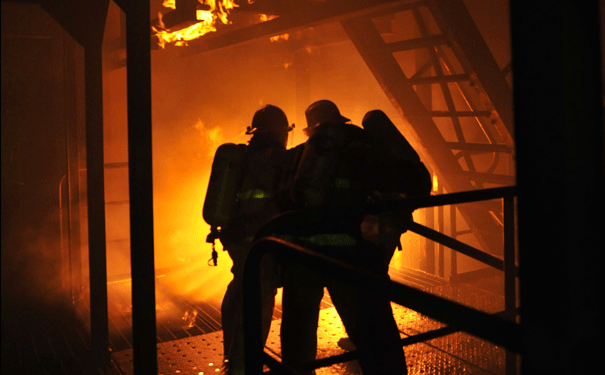
The new technology could assist further research in extinguishing flames without water. Image: DARPA
Forget water, bring out the bass.
Music could be the latest weapon in fire fighting — and US government scientists are using high-powered speakers to put out flames. The US Defence Advanced Research Projects Agency (DARPA) demonstrates new techniques to manipulate and extinguish small flames by using electric and acoustic suppression, which could benefit combustion research.
In 2008, DARPA launched the Instant Fire Suppression (IFS) project to develop a fundamental understanding of fire with the aim of transforming approaches to fire fighting. Traditional fire-suppression technologies focus largely on disrupting the chemical reactions involved in combustion, such as water smothering a flame. DARPA theorised that by using physics techniques rather than chemistry, it might be possible to manipulate and extinguish the flames without water.
“From a physics perspective, flames are cold plasmas. DARPA theorised that by using physics techniques rather than combustion chemistry, it might be possible to manipulate and extinguish flames,” the agency explains on its information page.
In one experiment, the team of researchers used speakers to blast sound at specific frequencies that extinguish the flame. Each speaker emits a low frequency to increase the rate of air velocity. By manipulating this, the origin of the fire’s combustion, the flame boundary layer, can be disrupted. When the air velocity changes, the flame boundary layer, which is where the combustion occurs, begins to thin. By disturbing the surface, the acoustic fields lead to higher fuel vaporistion, which results in the widening of the flame and eventually bringing down the overall temperature of the blaze. Even better, the sound does not even need to be offensively loud to achieve any of this.
This kind of technology, once developed further, could be applied to enclosed spaces — such as military ship holds, ground vehicles or aircraft cockpits. Blazes in these kinds of areas can cause extreme damage, where traditional methods to combat fire may not be easily carried out. For example, the shipboard fire on the carrier USS George Washington in May 2008, which burned for 12 hours, caused an estimated $72 million worth of damage.
“We have shown that the physics of combustion still has surprises in store for us,” says Matthew Goodman, DARPA program manager in a statement. “Perhaps these results will spur new ideas and applications in combustion research.”
Source: DARPA






